|
Retro Homebrew & Console News is a site that has the latest Retro Homebrew News, DCEmu Hosted Coder Releases, Interviews, History and Tutorials, Part of the
DCEmu Homebrew & Gaming Network.
THE LATEST NEWS BELOW
|
August 16th, 2014, 22:58 Posted By: wraggster
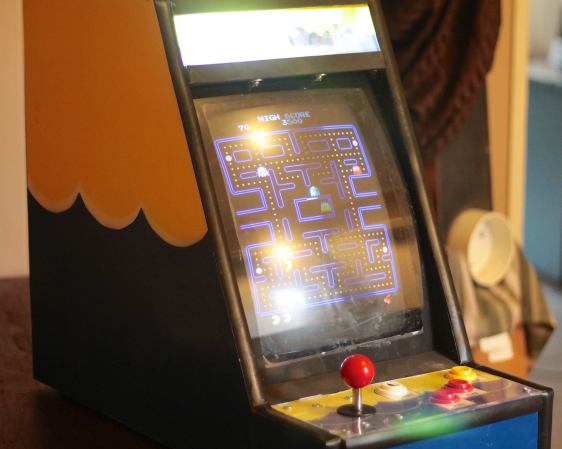
[Greg] wanted to build a MAME cabinet. Not one of those monsters that take up a bunch of floor space, mind you: this one would be table-top size. He admits he could have made his game system out of new, currently available, off the shelf parts, but part of the design goal was to reuse old hardware that was kicking around. It was important to [Greg] to keep unnecessary waste out of the landfill.
An old PC motherboard was pulled out of an old desktop. It’s not fast enough for use as an everyday computer but it will be totally sufficient for a MAME machine. The project’s screen is an old 13 inch Gateway CRT computer monitor. Notice that it is turned 90 degrees so that it is taller than it is wide. This screen orientation lends itself better to certain types of games. The monitor’s plastic casing was removed before some measurements were taken. SketchUp was used to plan a basic idea of the cabinet.
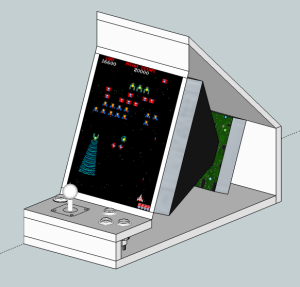
The controls consist of a joystick and 4 buttons. During past projects, [Greg] has had experience with the least-expensive arcade controls available on eBay. Well, you get what you pay for. This time around he ponied up the extra cash for some high quality controls and is satisfied with the purchase. These buttons were wired straight into a PS/2 keyboard so the computer does not know the difference between the keyboard keys or recently added controls… another great re-use of old obsolete hardware.
The cabinet is made from MDF, glued and screwed together. The limited wood working tools available wasn’t a show stopper for this dedicated builder. For example, the square hole for the joystick was made by removing most of the material with a spade drill bit before using a chisel to clean up the edges. Doing it this way was a little tedious, but you have to do what you have to do sometimes. Once the entire cabinet was finished, several coats of paint were added in a yellow and blue water-theme. Black rubber molding finishes off the edges of the cabinet nicely.
http://hackaday.com/2014/08/16/table...-water-cooler/
To read more of the post and Download, click here!
 Join In and Discuss Here Join In and Discuss Here
Submit News and Releases Here and Contact Us for Reviews and Advertising Here |
|
 |
|
|
|
August 16th, 2014, 22:44 Posted By: wraggster
The all-in-one editing tool for Final Fantasy 4, FF4kster, has received another update. In addition to the usual bug fixes and minor improvements, the highlights are as follows:
The event editor has been cleaned up quite a bit. It now can preview Bank 2 messages as well as NPC placements. It will even dynamically update said previews when the event contains a teleport instruction.
There is now a solobattle editor that allows you to edit the details of battles that hide particular actors or hide all actors except particular ones.
Furthermore, the command editor now allows the editing of far more details of battle commands.
http://www.romhacking.net/utilities/914/
To read more of the post and Download, click here!
 Join In and Discuss Here Join In and Discuss Here
Submit News and Releases Here and Contact Us for Reviews and Advertising Here |
|
 |
|
|
|
August 16th, 2014, 22:41 Posted By: wraggster
The following Translations have been submitted and approved to the database (in submitted order oldest to newest):
To read more of the post and Download, click here!
 Join In and Discuss Here Join In and Discuss Here
Submit News and Releases Here and Contact Us for Reviews and Advertising Here |
|
 |
|
|
|
August 3rd, 2014, 22:01 Posted By: wraggster
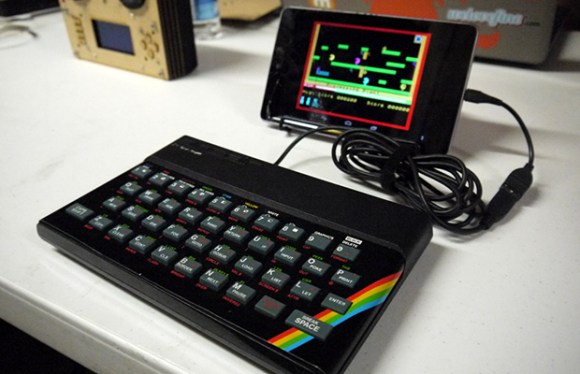
They’re a little hard to find in the US, but the ZX Spectrum is right up there with the Commodore 64 and the Atari 8-bit computers in England. [Alistair] wanted to recreate the feeling of sitting right in front of the TV with his Speccy, leading him to create the ZX Keyboard, a Spectrum repurposed into a USB keyboard.
While most projects that take an old key matrix and turn it into a USB keyboard use the TMK firmware, [Alistair] wanted to flex his programming muscles and wrote the firmware from scratch. It runs on an Arduino Pro Mini, scanning the matrix of five columns and eight half rows to turn combinations of keypresses into an astonishing number of commands, given the limited number of keys on the ZX.
The firmware is available on [Alistair]‘s repo, available to anyone who doesn’t want to pay the £50 a new ZX Spectrum keyboard will cost. As far as the usability of a Spectrum keyboard goes, at least [Alistair] didn’t have an Atari 400 sitting in the attic.
http://hackaday.com/2014/07/31/zx-sp...-usb-keyboard/
To read more of the post and Download, click here!
 Join In and Discuss Here Join In and Discuss Here
Submit News and Releases Here and Contact Us for Reviews and Advertising Here |
|
 |
|
|
|
July 28th, 2014, 22:27 Posted By: wraggster
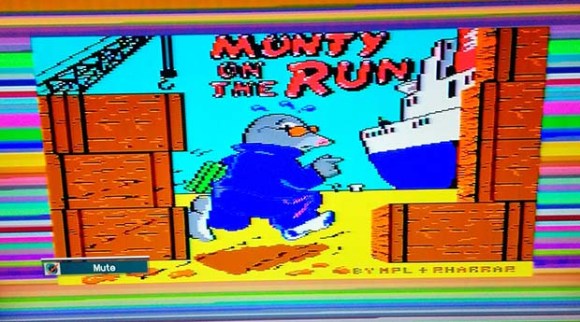
[sweetlilmre] is just beginning his adventures in retrocomputing, and after realizing there were places besides eBay to buy old computers, quickly snagged a few of the Amigas he lusted after in his youth. One of the machines that didn’t make it into his collection until recently was a Commodore 64 with Datasette and 1541 drive. With no tapes and a 1541 disk drive that required significant restoration, he looked at other devices to load programs onto his C64.
These devices, clever cartridge implementations of SD cards and Flash memory, cost more than anyone should spend on a C64. Realizing there’s still a cassette port on the C64, [sweetlilmre] created Tapuino, the $20 Commodore tape emulator
The hardware used to load games through the Datasette connector included an Arduino Nano, a microSD breakout board, a 16×2 LCD, some resistors, buttons, and a little bit of wire. The firmware part of the build – available here on the Git - reads the .TAP files off the SD card and loads them into the C64.
[sweetlilmre] posted a very complete build post of the entire device constructed on a piece of protoboard, Pop that thing in a 3D printed case, and he can have the entire C64 library in his pocket.
http://hackaday.com/2014/07/25/the-e...n-your-pocket/
To read more of the post and Download, click here!
 Join In and Discuss Here Join In and Discuss Here
Submit News and Releases Here and Contact Us for Reviews and Advertising Here |
|
 |
|
|
|
July 28th, 2014, 22:24 Posted By: wraggster

There aren’t too many details available about this hack, but we still thought it was interesting enough to share. YouTube user [Aussie50] seems to have figured out a way to on an automated teller machine (ATM). Not only is the system running the software, it also appears that they are using the ATM’s built-in buttons to control the action in-game.
Many ATM’s today are simply computers that run a version of Windows, so one would assume it shouldn’t be too difficult to get an older game like DOOM running on the hardware. Towards the beginning of the video, you can quickly get a glimpse of what appears to be a default Windows XP background screen. You can see later in the video that [Aussie50] drops to what appears to be an MS-DOS command line. It stands to reason then that this particular model of ATM does run on Windows XP, but that [Aussie50] may have had to install MS-DOS emulation software such as DOSBOX as well.
At one point in the video, the camera man mentions they are using an I-PAC2. Some research will show you that this little PCB is designed to do USB keyboard emulation for arcade games. It looks like you can just hook up some simple momentary switches and the I-PAC2 will translate that into USB keyboard commands. It is therefore likely that [Aussie50] has hooked up the ATM’s buttons directly to this I-PAC2 board and bypassed the original button controller circuit altogether.
It is also mentioned in the video that [Aussie50] was able to get the receipt printer working. It would be interesting to somehow incorporate this into the DOOM game. Imagine receiving a receipt with your high score printed on it. This also gets us thinking about other possibilities of gaming on ATM hardware. Can you configure the game to require a deposit before being able to play? Can you configure it to dispense cash if you beat the high score? What if you modified the multiplayer deathmatch mode so all players must pay an entry fee and the winner takes all? What creative ideas can you come up with for gaming on ATM hardware? [Read more...]
http://hackaday.com/2014/07/26/playing-doom-on-an-atm/
To read more of the post and Download, click here!
 Join In and Discuss Here Join In and Discuss Here
Submit News and Releases Here and Contact Us for Reviews and Advertising Here |
|
 |
|
|
|
July 21st, 2014, 21:07 Posted By: wraggster
via http://www.emucr.com/
Virtual Jaguar Git (2014/07/21) is compiled. Virtual Jaguar is an open source emulator based on Jagem (Virtual Jaguar) for Linux, MacOS X, and Windows. The source also compiles on BeOS. Virtual Jaguar is an awesome Atari Jaguar emulator with great compatibility.
Virtual Jaguar Git Changelog:
* Fixed RISC division algorithm; thanks to SPCPD for the info.
https://www.sendspace.com/file/sw639j
To read more of the post and Download, click here!
 Join In and Discuss Here Join In and Discuss Here
Submit News and Releases Here and Contact Us for Reviews and Advertising Here |
|
 |
|
|
|
July 20th, 2014, 21:30 Posted By: wraggster
Maybe they weren’t really ever gone but even so Commodore enthusiast [ALWYZ] is here at HOPE X spreading re-awareness of the Commodore 64 and that there is still a community of Commodore fans out there who have been up to some pretty cool projects.
One of those projects is a Quantum Link-esque service called Q-Link Reloaded. Quantum Link was an online service available for Commodore 64 and 128 users that offered electronic mail, online chat, file sharing, online news, and instant messaging. It lasted from the mid-80s to the mid-90′s and later evolved into America Online. In 2005, a group of folks reversed-engineered the original server code and the resultant Q-Link Reloaded lets the Commodore folks once again communicate with each other.
Also on display is a Raspberry Pi running a C64 emulator complete with a controller to GPIO adapter. Hackaday has covered this emulator just a few months ago and it is great to see it working in person.
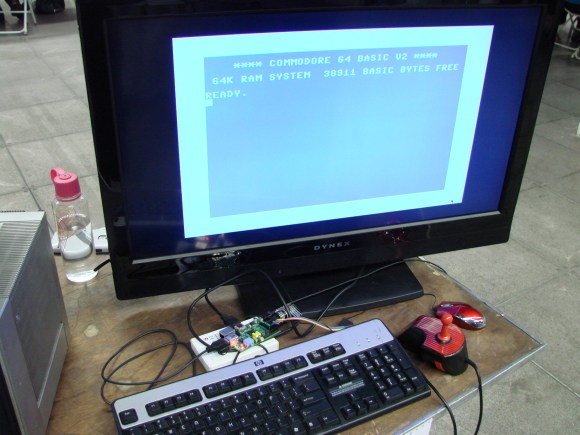
http://hackaday.com/2014/07/19/hope-...are-back-baby/
To read more of the post and Download, click here!
 Join In and Discuss Here Join In and Discuss Here
Submit News and Releases Here and Contact Us for Reviews and Advertising Here |
|
 |
|
|
|
July 20th, 2014, 21:23 Posted By: wraggster
The following Hacks have been submitted and approved to the database (in submitted order oldest to newest):
To read more of the post and Download, click here!
 Join In and Discuss Here Join In and Discuss Here
Submit News and Releases Here and Contact Us for Reviews and Advertising Here |
|
 |
|
|
|
July 18th, 2014, 00:26 Posted By: wraggster
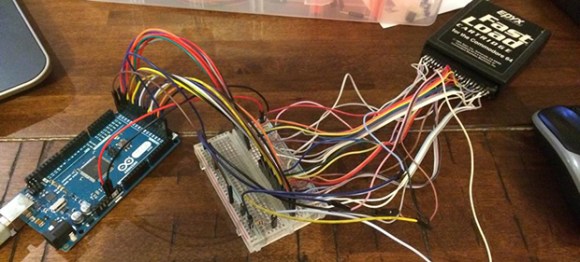
While [Rob] was digging around in his garage one day, he ran across an old Commodore 64 cartridge. With no ROM to be found online, he started wondering what was stored in this ancient device. Taking a peek at the bits stored in this cartridge would require dumping the entire thing to a modern computer, and armed with an Arduino, he created a simple cart dumper, capable of reading standard 8k cartridges without issue.
The expansion port for the C64 has a lot of pins corresponding to the control logic inside these old computers, but the only ones [Rob] were really interested in were the eight data lines and the sixteen address lines. With a little bit of code, [Rob] got an Arduino Mega to step through all the address pins and read the corresponding data at that location in memory. This data is then sent over USB to a C app that dumps everything in HEX and text.
While the ROM for just about every C64 game can be found online, [Rob] was unlucky enough to find one that wasn’t. It doesn’t really matter, though, as we don’t know if [Rob] has the 1541 disk drive that makes this cart useful. Still, it’s a good reminder of how useful an Arduino can be when used as an electronic swiss army knife.
http://hackaday.com/2014/07/09/a-sim...4-cart-dumper/
To read more of the post and Download, click here!
 Join In and Discuss Here Join In and Discuss Here
Submit News and Releases Here and Contact Us for Reviews and Advertising Here |
|
 |
|
|
|
July 8th, 2014, 00:43 Posted By: wraggster
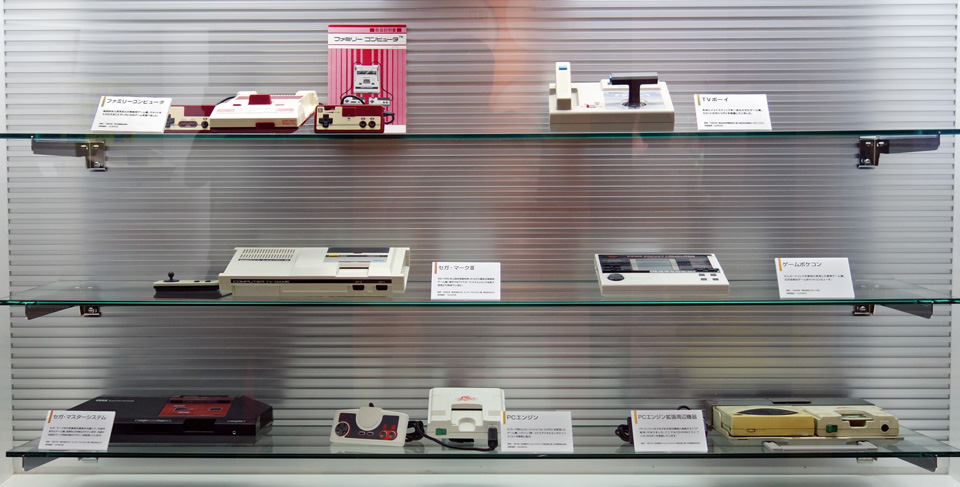
History is written by the victors, but for all those generations of console wars we've managed to weather through, what about the other guys? Opening this week, a newgames museum in southern Japan houses 56 different consoles of varying fame (or infamy). For every NES/Famicom, there are curiosities like the huge "Pocket Home PC," failing on the very definition of its name. Remember the Sega Game 1000? We didn't, but we should probably cut these (mostly) beige consoles some slack. While most of the devices toured here weren't a commercial success, each helped gently push gaming toward its current state -- if only by firmly demonstrating what we didn't want. And yeah, we wish the Dreamcast was still around too. Here's to the games consoles we've loved and lost over the last 40 years.
http://www.engadget.com/2014/07/04/t...-console-wars/
To read more of the post and Download, click here!
 Join In and Discuss Here Join In and Discuss Here
Submit News and Releases Here and Contact Us for Reviews and Advertising Here |
|
 |
|
|
|
July 7th, 2014, 21:57 Posted By: wraggster
For a while it appeared as though Japan’s booming video game business was immune to the country’s drawn-out economic bust. As Japan slumped into a deep recession, the industry flew an inverse trajectory, reaching a dizzying peak in 1997 thanks to the invigorating success of Sony’s PlayStation. But soon enough the long winding lines of consumers that greeted each new high-profile game release in Akihabara also began to shrink as the nation’s previously insatiable appetite for electronic entertainment waned. In 2002, America overtook Japan as the world’s biggest consumer of video games and in 2003 Europe nudged into second place.Of all the video game console manufacturers, Nintendo had the most to fear from this decline. Just as game sales were in dramatic regression in the company’s key home territory, so Sony’s PlayStation 2 had cast a long shadow over the GameCube, with Microsoft’s newcomer selling 2 million more units of its Xbox than the one-time Japanese leader of the home console market. Moreover, for both Sony and Microsoft, video games were just one component of a sprawling empire. If their respective game divisions performed poorly for a time, other areas of the business could take up the slack. For Nintendo, as with Sega before it, there was no fallback. If the company couldn’t turn its speeding decline around, it would have little choice but to follow Sega in turning its back on the console hardware business to focus exclusively on publishing.It was into this tumultuous landscape that Nintendo’s new president, Satoru Iwata stepped in 2002, replacing Hiroshi Yamauchi at the helm of a company headed for disaster. In November 2003, for the first time in the company’s history, Nintendo announced a loss for the beginning half of the fiscal year. In the same breath, Iwata-san proclaimed that the company was developing a new system, neither a successor to the GameCube nor the Game Boy Advance, but a system that would “go back to basics” in the hope of attracting gamers of all ages, and players with no prior experience of games. This feature is an extract from Simon Parkin’s book, An Illustrated History of 151 Videogames. This feature is an extract from Simon Parkin’s book, An Illustrated History of 151 Videogames.
With the growing success of adult-focused games and online connectivity, the direction made little sense. While the desire to widen the boundaries of the games industry to encompass a broader mass market appeared logical, Iwata’s statement that “you can’t open up a new market of customers if you can’t surprise them” seemed cavalier in Nintendo’s immediate context. A year later, when the Nintendo DS was unveiled, method still seemed to have been overtaken by madness. The silvery, somewhat bulky handheld system – decidedly not, as Nintendo was only too keen to emphasize, a successor to the GBA – opened like a book to reveal two screens, one of which was a touch screen that could be interacted with using a stylus. Despite the in-built microphone and wireless connectivity there seemed no way that this Game & Watch style throwback could be anything other than a side-project for the company. Sony dismissed the system as a gimmick, ‘a knee-jerk reaction’ to its futuristic, widescreen PSP handheld system, while many developers seemed equally sceptical and confused as to how to employ the system’s idiosyncratic capabilities.Within 12 months, Nintendo had not only proven its detractors wrong, but had turned around the company’s fortunes. In the space of just one year the Nintendo DS sold 13 million units while the handheld accounted for 45 per cent of all software sold in Japan in 2005, enabling Nintendo to leapfrog Sony’s control of the software market. As with the Game Boy, Nintendo began to iterate on the hardware, releasing the DS Lite and then the DSi in various incarnations, and by 2010 over 135 million units had been sold globally.Most significantly, the Nintendo DS had proven Iwata’s assertion that chasing innovation rather than technological superiority was the key to Nintendo’s future, a simple ideological shift that would have a profound effect.
http://www.edge-online.com/features/...e-nintendo-ds/
To read more of the post and Download, click here!
 Join In and Discuss Here Join In and Discuss Here
Submit News and Releases Here and Contact Us for Reviews and Advertising Here |
|
 |
|
|
|
July 7th, 2014, 21:56 Posted By: wraggster
Never underestimate the force of revenge. Without it, Sony’s PlayStation would never have made it from designer Ken Kutaragi’s wild imagination into 102 million homes around the world. Neither would games have popped into 3D with the forceful brilliance facilitated by Sony’s debut without that most ancient of creative incentives: a business vendetta.At the Consumer Electronics Show in June 1991 Sony unveiled its first video game console, a joint creation from the Japanese electronics giant and Nintendo. A Super Famicom with an in-built CD-ROM drive, the system was designed to be Nintendo’s route into the emerging world of multimedia entertainment, as well as Sony’s first tentative step into a market that, to date, it had watched from afar.The next day, Nintendo announced it would be breaking its deal with Sony, instead partnering with its rival, Philips, on the project. Few snubs in Japanese business have been played out so publically, and the turnabout was humiliating to Sony, despite the fact that the relations had been deteriorating for months over how revenue would be shared and collected by the two companies.The next month Sony president Norio Ohga called a meeting to plan litigation against Nintendo. But financial recompense through the courts would not be enough to sate his appetite for revenge. Ohga stood to his feet and declared to the room: ‘We will never withdraw from this business. Keep going.’ This feature is an extract from Simon Parkin’s book, An Illustrated History of 151 Videogames. This feature is an extract from Simon Parkin’s book, An Illustrated History of 151 Videogames.
Kutaragi, buoyed by this support from the most senior level of the company, pulled together a team of engineers that had been working on a 3D graphics engine designed to augment live television broadcasts with 3D images in real time. The technology, dubbed System-G, shared technological similarities with the way video games work, even if, as a high-end workstation, the thought of introducing this sort of technology to the home seemed impossible.By June 1992 all relations with Nintendo had been severed and Kutaragi was called to present his work to Ohga and other Sony executives. It was here the designer revealed his plans for a proprietary CD-ROM based system capable of rendering 3D graphics for use in a video game. Ohga asked what sort of chip the machine would require and Kutaragi replied it would need one million gate arrays. Ohga laughed at the figure: the maximum Sony made at the time was 100,000. Kutaragi, in a moment of shrewd understanding, replied: “Are you going to sit back and accept what Nintendo did to us?”Ohga, wanting to protect Kutaragi from Sony’s board, who viewed video games as toys and feared entering the market would dilute the company brand name, moved the designer to Sony Music, a separate subsidiary. The move was significant as Sony Music understood that creative talent needs nurturing in a way that the drier, tech-focused core part of the company didn’t. Likewise, their expertise in manufacturing huge amounts of discs would prove invaluable.Attracting developers to the new system proved straightforward. Without an internal development studio at Sony, the lack of competition to many potential developers was an advantage. In Japan, Nintendo’s huge royalty rates made development for the machine a huge risk for publishers, so Sony’s more reasonable rates proved attractive. If you want more insight into PlayStation’s creation, Making Of feature from 2009 is an essential read. If you want more insight into PlayStation’s creation, Making Of feature from 2009 is an essential read.
When PlayStation launched in Japan on 3 December, 1994 a huge number of developers across the world were busy creating software for the machine. Namco’s launch title, Ridge Racer, was a startling port of the arcade game, one that demonstrated the power of the system in no uncertain terms. All 100,000 launch units sold out, with another 200,000 units shifted in the following 30 days. Pricing was key to its success, and, even though Sony lost money on each unit sold until 1995, the fact the PlayStation was ¥5,000 cheaper than Sega’s Saturn helped Sony gain crucial ground in the 32-bit race.By March 2007, Sony had sold 102 million systems across the world, success born in a perfect storm of technology, pricing, marketing and, perhaps most importantly, old-fashioned rivalry and honour.
http://www.edge-online.com/features/...y-playstation/
To read more of the post and Download, click here!
 Join In and Discuss Here Join In and Discuss Here
Submit News and Releases Here and Contact Us for Reviews and Advertising Here |
|
 |
|
|
|
July 7th, 2014, 21:55 Posted By: wraggster
Much of the PlayStation 2’s ubiquitous success could be attributed, not to its games or graphics, but to the fact that the machine doubled as an inexpensive and stylish DVD player. In 2004 convergence was the new slogan in video game hardware manufacturing and marketing. Games? Games were no longer enough, so the story went. As such, Ken Kutaragi’s focus when developing the PlayStation Portable was primarily on what the system could do when it wasn’t playing video games.It was this focus that drove the decision to use an optical media disc as the system’s storage media, Sony devising the Universal Media Disc as a kind of mini-DVD on which both games and movies could be stored and viewed. To emphasize the cinematic ideology behind the system, the company placed a lavish 4.3 inch widescreen display at the centre of the handheld, one that, with 16,770,000 colours, appeared to have skipped several steps ahead on the evolutionary scale to any handheld games technology on the market.When Sony revealed the handheld’s design at E3 2004 and attendees had the chance to see the machine while running, the curious hardware innovations of Nintendo’s rival DS seemed irrelevant. The PSP was a cinema in your palm. This feature is an extract from Simon Parkin’s book, An Illustrated History of 151 Videogames. This feature is an extract from Simon Parkin’s book, An Illustrated History of 151 Videogames.
The feverish excitement surrounding the machine’s Japanese launch on December 12, 2004 seemed at odds with Japan’s plunge into recession. Chinese importers employed the services of Akihabara’s homeless to buy up units to sell back home for astonishing profit. 171,963 units were sold on launch day with nearly 500,000 units shifted by the New Year.But the PSP’s initial signs of success did not bear out in the long run. At the time few would have bet against Sony’s decision to pack the most advanced technology into their first handheld in favour of Nintendo’s decision to eschew power in favour of what were ostensibly seen as gimmicks. But in commercial terms Nintendo’s courting of non-traditional game audiences paid off as the DS comfortably overtook the PSP in sales.The final boot in the PSP’s prospects (in commercial terms, at least) came on June 15, 2005 when hackers disassembled the PSP’s firmware and released a hacked version for download on the internet. When installed the new software allowed PSP owners to run homebrew software and pirated games from the memory stick – with a clutch of emulators available for playing out-of-print games as well as titles currently on the market. The homebrew scene’s gain was Sony’s loss, as rampant piracy eroded game sales and disheartened developers abandoned the system en masse.
http://www.edge-online.com/features/...ware-sony-psp/
To read more of the post and Download, click here!
 Join In and Discuss Here Join In and Discuss Here
Submit News and Releases Here and Contact Us for Reviews and Advertising Here |
|
 |
|
|
|
July 6th, 2014, 21:05 Posted By: wraggster

Almost a year ago, [miker00lz] started a thread on the Arduino forums telling everyone about a 6502 emulator and BASIC interpreter he wrote for an Arduino Uno. The chip inside the Uno isn’t a powerhouse by any means, and with only 2KB of RAM it’s far less capable than just about any computer from the 70s. Arduino works on a lot of different chips, though, and after a few months, [Jan] turned an Arduino Due into a Commodore 64 emulator.
[Jan]‘s code isn’t limited to the DUE, and can be used with any chip with enough memory. If you’re feeling fancy, you can connect a TFT display for all the vintage goodness of PETSCII graphics, all while running a faster BASIC than the very stripped down EHBASIC.
Because the emulator is using software to talk to the outside world, it should be possible to use this project to interface with the cooler chips found in Commodore machines – SIDs for one, but also the cartridge port for some vintage Ethernet goodness. It’s not even limited to Commodore machines, either: the POKEY chips found in Atari 8-bit micros are seriously underutilized in the chiptune and demoscene, and having modern hardware to play with these chips couldn’t hurt in the slightest.
http://hackaday.com/2014/07/06/c64-e...e-arduino-due/
To read more of the post and Download, click here!
 Join In and Discuss Here Join In and Discuss Here
Submit News and Releases Here and Contact Us for Reviews and Advertising Here |
|
 |
|
|
|
July 6th, 2014, 01:16 Posted By: wraggster

Do you ever miss your gaming system of yesteryear? [yv3] did so he built a retro gaming console. Even though [yv3] likes his old school games, he didn’t want to be stuck listening to old school 8-track tapes while playing those games. The solution for him was to build a retro gaming console with integrated internet radio.
The gaming portion of the build relies on RetroPie. The RetroPie disk image contains all of the software and emulators needed to turn a Raspberry Pi into a dedicated retro gaming system. The RetroPie project supports a lot of gaming systems, [yv3] chose to include Atari, Sega Master System and Genesis, NES, SNES, and Turbografx-16.
Raspberry Pi Internet Radio manages the radio portion of this project and is set up to start playing automatically when the unit is powered on. There are 5 buttons to change the station, volume and settings. The radio stations are managed by a text file residing on the SD card. Audio from the radio can be directed to either the HDMI or the analog out of the RaspPi.
http://hackaday.com/2014/07/03/retro...nternet-radio/
To read more of the post and Download, click here!
 Join In and Discuss Here Join In and Discuss Here
Submit News and Releases Here and Contact Us for Reviews and Advertising Here |
|
 |
|
|
« prev
46
47
48
49
50
51
52
53
54
55
56
57
58
59
60
61
62
63
64
65
66
next » |













